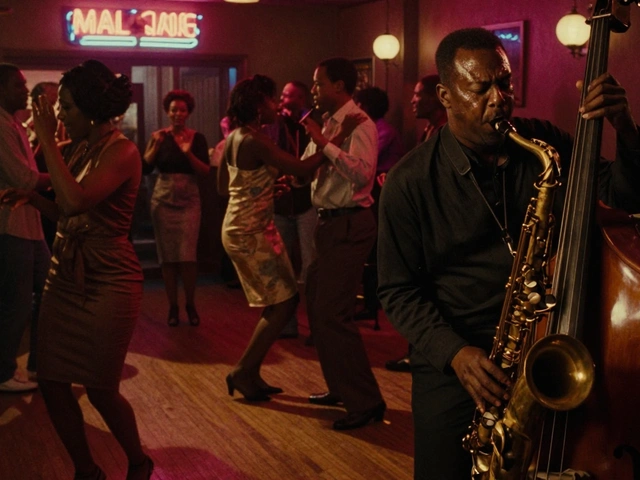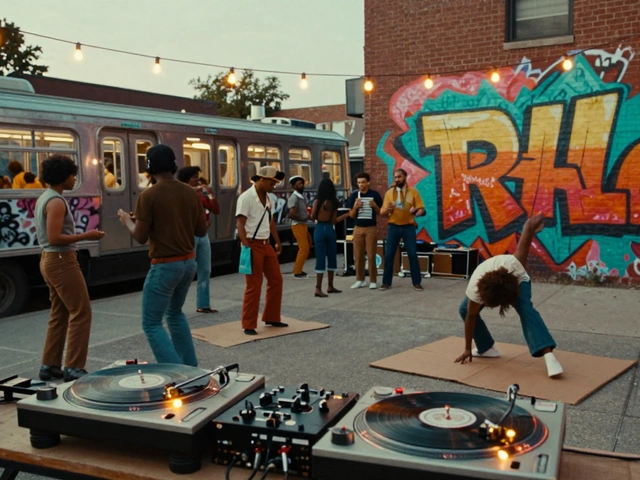In the years when radio waves lit up with raw, moving voices and bold rhythms, the world was swept by a cultural revolution led by soul music. This wasn’t just a genre; it was a force that cut through barriers—and sometimes, it felt like every turn of the dial meant stumbling into greatness. Think about it: we’re talking about an era when singers poured every ounce of pain, joy, love, and hope into their songs. It wasn’t hard to find a record that could stop you in your tracks, force you to listen, and make you feel something real. That’s soul.
The Birth of Soul: Where Gospel Met Rhythm and Blues
The roots of soul music dig deep into American life. Before labels and charts, there were gospel choirs belting out harmonies in church pews, and there was rhythm and blues shaking up local dance halls. The magic happened when these worlds collided. You got folks like Ray Charles, plucking out piano chords, blending church-choir shouts with R&B swagger. In 1955, Ray’s “I Got a Woman” was lightning in a bottle—it charted at Number 1 on the Billboard R&B chart and is widely considered the seed from which modern soul grew.
People sometimes forget how much guts it took to break these boundaries. When Sam Cooke went solo in 1957 after his gospel days with The Soul Stirrers, some fans called it a betrayal. But Cooke wasn’t just chasing fame—he wanted to reach anyone listening, no matter their background. With “You Send Me,” he proved it was possible. That song hit number one on both R&B and pop charts—something unheard of for a Black artist at the time. Cooke’s velvet-smooth delivery helped open new doors for all who followed.
Meanwhile, over in Detroit, Berry Gordy Jr. was cooking up something special. Motown Records took gospel’s call-and-response, mixed it with the punch of a backbeat and polished it for mainstream ears. Smokey Robinson wrote lyrics that tugged at your heart. The Supremes and The Temptations dressed up soul with glamour and choreography. In one wild year, 1964, Motown sent seven records to the number one spot of the pop charts. Their approach didn’t just catch on; it set the standard.
Often overlooked is Stax Records in Memphis, where Otis Redding and Booker T. & the MG’s powered up a grittier, southern soul sound. If Motown had polish, Stax had sweat. Listen to Redding growl through “Try a Little Tenderness”—it’s a masterclass in pure, explosive emotion. The Stax house band became known as the sound behind legends, and some of their biggest hits came together by accident—like when Wilson Pickett added the famous “na na na na” outro on “Land of 1000 Dances” in just one studio take.
The Soul Explosion: Icons Who Changed Everything
When anyone talks about the golden era of soul, a few names jump out instantly. Aretha Franklin, the Queen of Soul, wasn’t just singing—she was declaring herself, and really, declaring You. In 1967, Aretha’s “Respect” shot up the charts. She turned a classic Otis Redding song into an anthem about dignity and justice. The track won her two Grammys and became the unofficial soundtrack for the civil rights movement and feminism alike.
James Brown, the Godfather of Soul, had a different weapon: that relentless groove. His 1965 release “Papa’s Got a Brand New Bag” exploded with funky horns and razor-sharp rhythms, and it won Brown his first Grammy. That record—and everything Brown did after—paved the way for funk, hip-hop, and pretty much every genre that got Americans moving over the next 50 years. Brown’s style was so electric, his touring band barely knew what he’d do next each night; you had to stay sharp or get shown up by the boss.
And then there’s Marvin Gaye, whose music practically dripped with honesty and depth. Born in D.C., he started as a Motown hitmaker but soon demanded more freedom. In 1971, he dropped “What’s Going On,” an album that asked tough questions about war, race, and family. Critics at first called it risky, but fans disagreed—the LP sold two million copies within a year and is now often listed among the greatest albums of all time.
Mistaking soul for just ‘feel-good’ music misses the point. Otis Redding’s “Sitting On The Dock of the Bay” (released posthumously in 1968 after his tragic plane crash) had listeners reflecting on loneliness and longing. Redding wrote the song days before his death, and it turned into his biggest hit—it even became the first posthumous number one single on the Billboard Hot 100.
Etta James, Wilson Pickett, Curtis Mayfield, and Al Green—just try running out of big names. Al Green’s “Let’s Stay Together” has wedding-dance credentials, but listen close and you’ll hear the ache under the smooth. Curtis Mayfield used his music to push for justice, especially with “People Get Ready,” praised by Martin Luther King Jr. for capturing the spirit of the civil rights movement.
“Soul music is about longevity and reaching and touching people on a human level – and that’s never going to get lost.” – Jill Scott
The Soundtrack to Social Change
Soul music didn’t just soundtrack parties and heartbreaks—it pushed back against injustice, becoming the heartbeat of the civil rights movement. When Dr. King marched, marchers sang “A Change is Gonna Come,” penned by Sam Cooke after he was barred from a whites-only hotel. That song became an anthem for hope and change, quoted in countless speeches and still echoing at rallies worldwide.
In 1968, Aretha Franklin’s “Respect” topped both the R&B and Pop charts while headlines told stories of protests and struggles. The words “R-E-S-P-E-C-T” became a rallying cry, showing that soulful sounds could carry powerful messages where speeches sometimes failed. Artists weren’t shy about speaking up. Nina Simone, with songs like “Mississippi Goddam,” used her platform to confront racism directly, risking her career but refusing to stay silent.
Soul musicians faced real dangers. Churches were bombed; musicians received threats. But that grit powered the music. Stax’s integrated house band ignored the divisive line drawn by others in Memphis, making their own kind of history in the process. The 1965 voter registration drive in Selma, Alabama, for example, was buoyed by artists and their songs. “People Get Ready” was sung by protestors as they marched over the Edmund Pettus Bridge, hand-in-hand in the face of armed state troopers.
Soul’s influence didn’t stop at American shores. During the anti-apartheid fights in South Africa, tracks like “What’s Going On” were copied onto cassette tapes and shared as underground signals of resistance. Even The Beatles credited Motown and Stax artists for inspiring tracks like “Drive My Car” and “Got To Get You Into My Life.”
Here’s a quick look at some numbers showing soul’s reach in the 1960s and 70s:
| Artist | Total Chart-Topping Hits (1960-1975) | Grammy Awards |
|---|---|---|
| Aretha Franklin | 17 | 7 |
| Stevie Wonder | 16 | 10 |
| James Brown | 10 | 2 |
| Marvin Gaye | 13 | 2 |
| Otis Redding | 6 | 2 (posthumous) |
It was real-life drama, and the music doubled as its script—catchy enough to make you dance, heavy enough to make you wake up.
Soul’s Lasting Legacy: Sampling, Resurgence, and Keeping It Alive
Soul might’ve been born in the sixties, but it refuses to fade. Sure, the radio changed. But that spirit—mixing pain and promise, raw vocals, and tight rhythms—it echoes everywhere, if you know where to listen. The hip-hop boom of the 1980s and ’90s took soul music records and turned them into gold mines for samples. Tracks by artists like The Notorious B.I.G. and Kanye West are packed with pieces of Aretha, Marvin, and Curtis Mayfield, giving new life to old cuts in ways the original hitmakers could never have imagined.
Modern pop, R&B, and even indie artists constantly tip their hats to soul. Just check out Adele’s “Rolling in the Deep”—that power and ache in her voice? Straight from the soul playbook. Alicia Keys, John Legend, and Leon Bridges have openly credited their whole style to those smoky, organ-rich tunes of the past.
But listening isn’t enough for a lot of fans. Across the globe, vinyl collectors hunt for the rarest Stax and Motown pressings, with some records fetching thousands of dollars. There are soul music festivals drawing big crowds, like the Porretta Soul Festival in Italy, which has run for over three decades and honors Otis Redding’s legacy every summer.
If you’re just getting into classic soul, here are a few tips that can make your journey more rewarding:
- Dig past the singles—albums like Marvin Gaye’s “What’s Going On” or Donny Hathaway’s “Live” are best experienced front-to-back.
- Watch live performances on YouTube—soul classics were often stretched out and improvised onstage, giving you the full impact.
- Read up on the backstories. Knowing the fight behind Aretha’s “Respect” or the heartbreak inside Etta James’ “I’d Rather Go Blind” changes how you hear them.
- Try the local record shop—it’s not just about the sound, it’s about holding the music in your hands, the way it was meant to be shared.
- Follow current artists who blend old and new, like Anderson .Paak or Brittany Howard, to see soul’s DNA carried on today.
Soul music endures because it asks real questions—about pain, hope, race, love, justice—and answers with every note and lyric. It was born in specific struggles, but it grew out of living rooms, dances, and late-night drives, touching anyone craving truth in a song. And if you ever want proof that music can shake the world, just sit with a scratchy old LP, let those horns blare, and feel it hit you all over again. That’s the golden era, alive and well, no matter what year you’re in.





